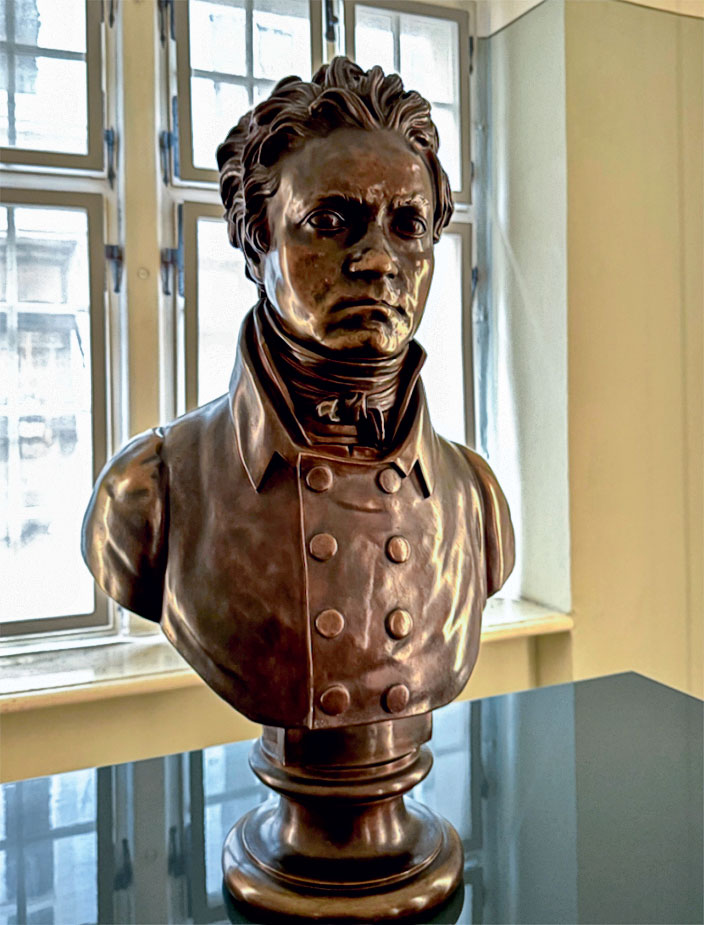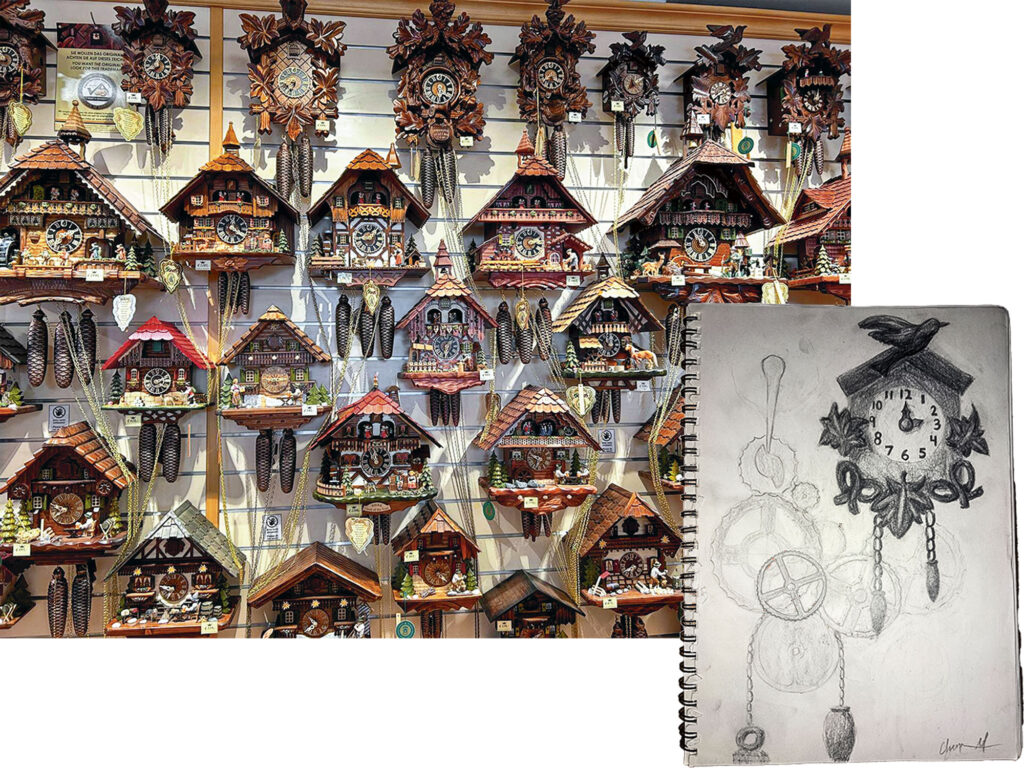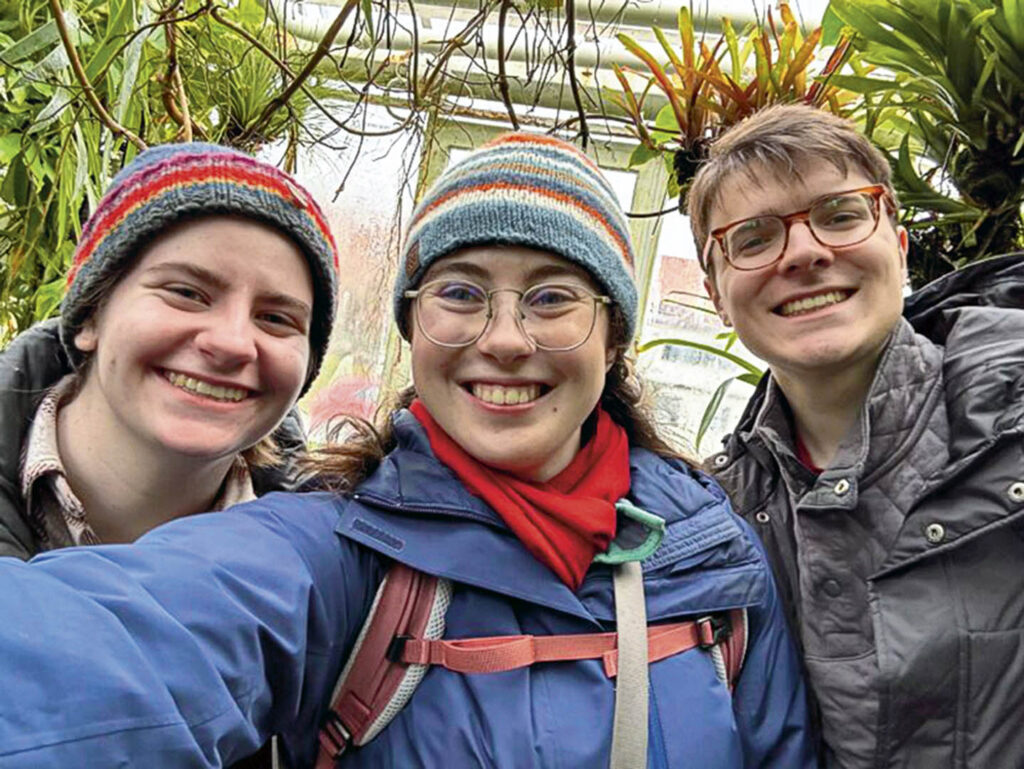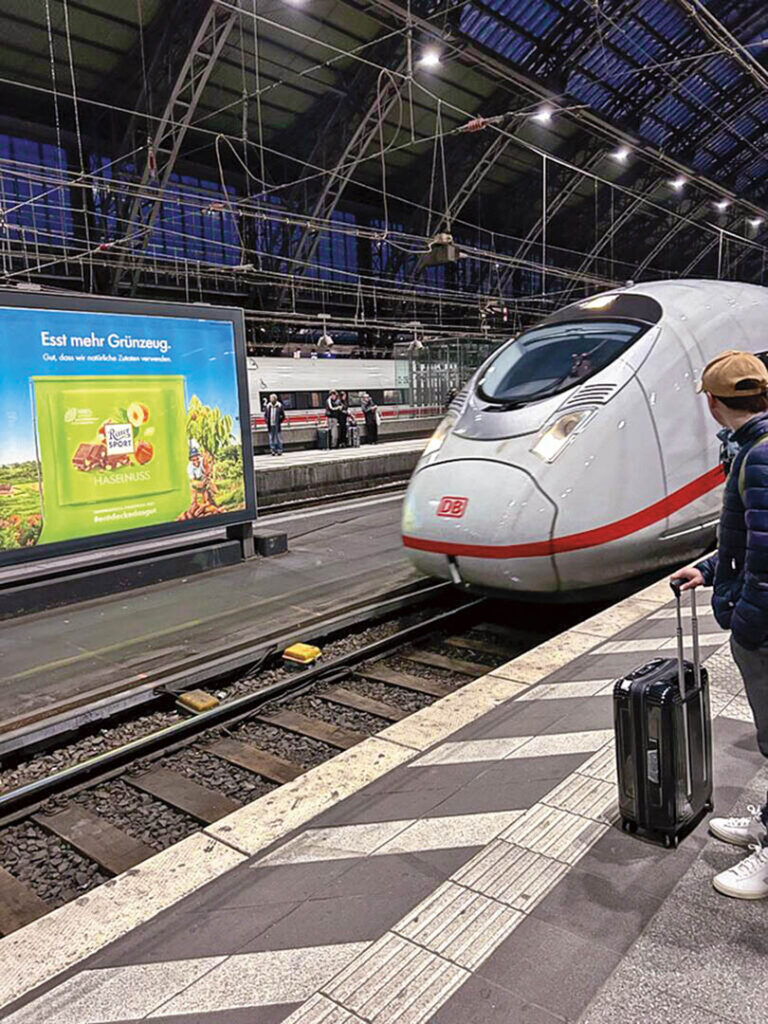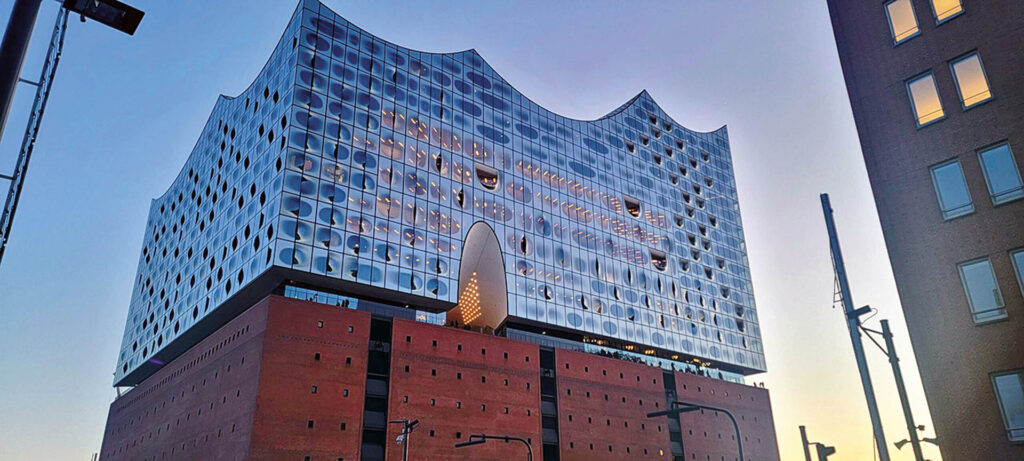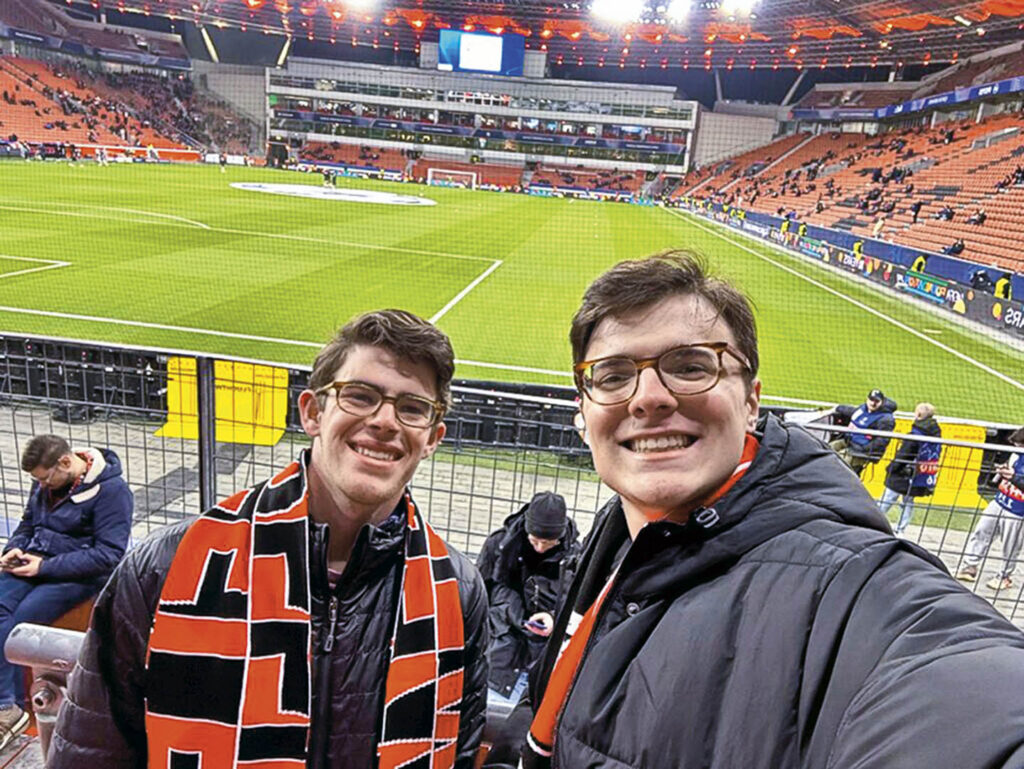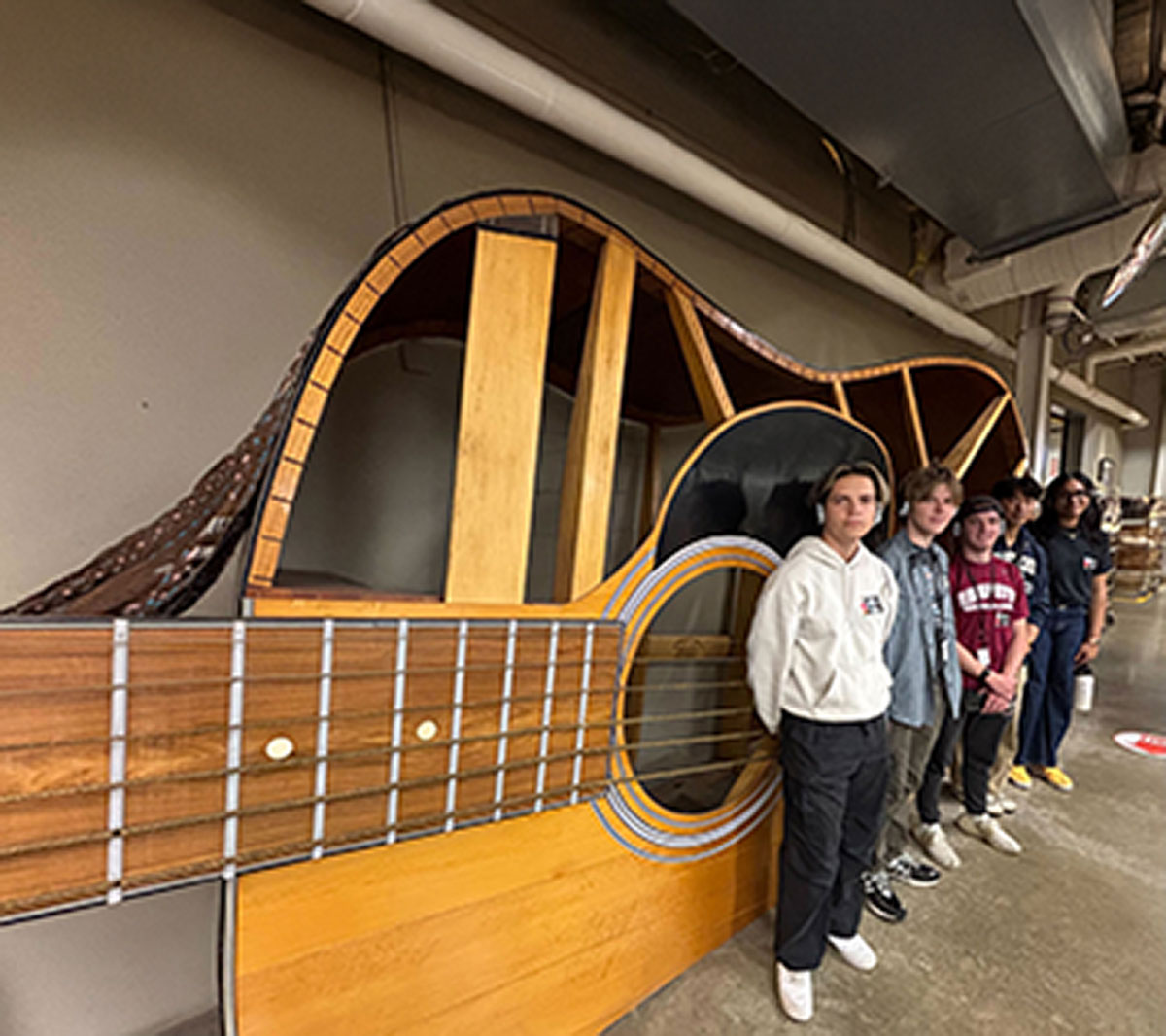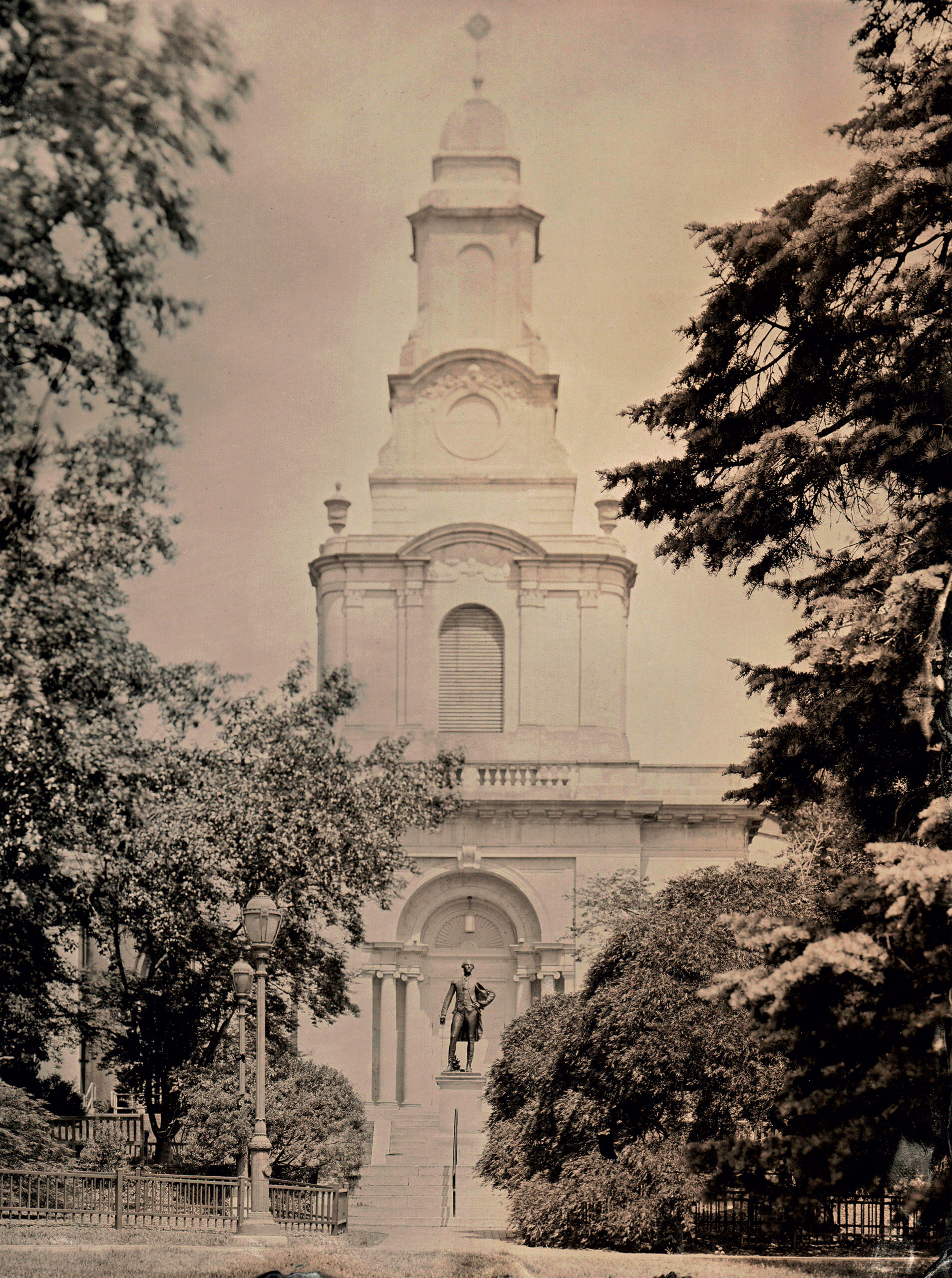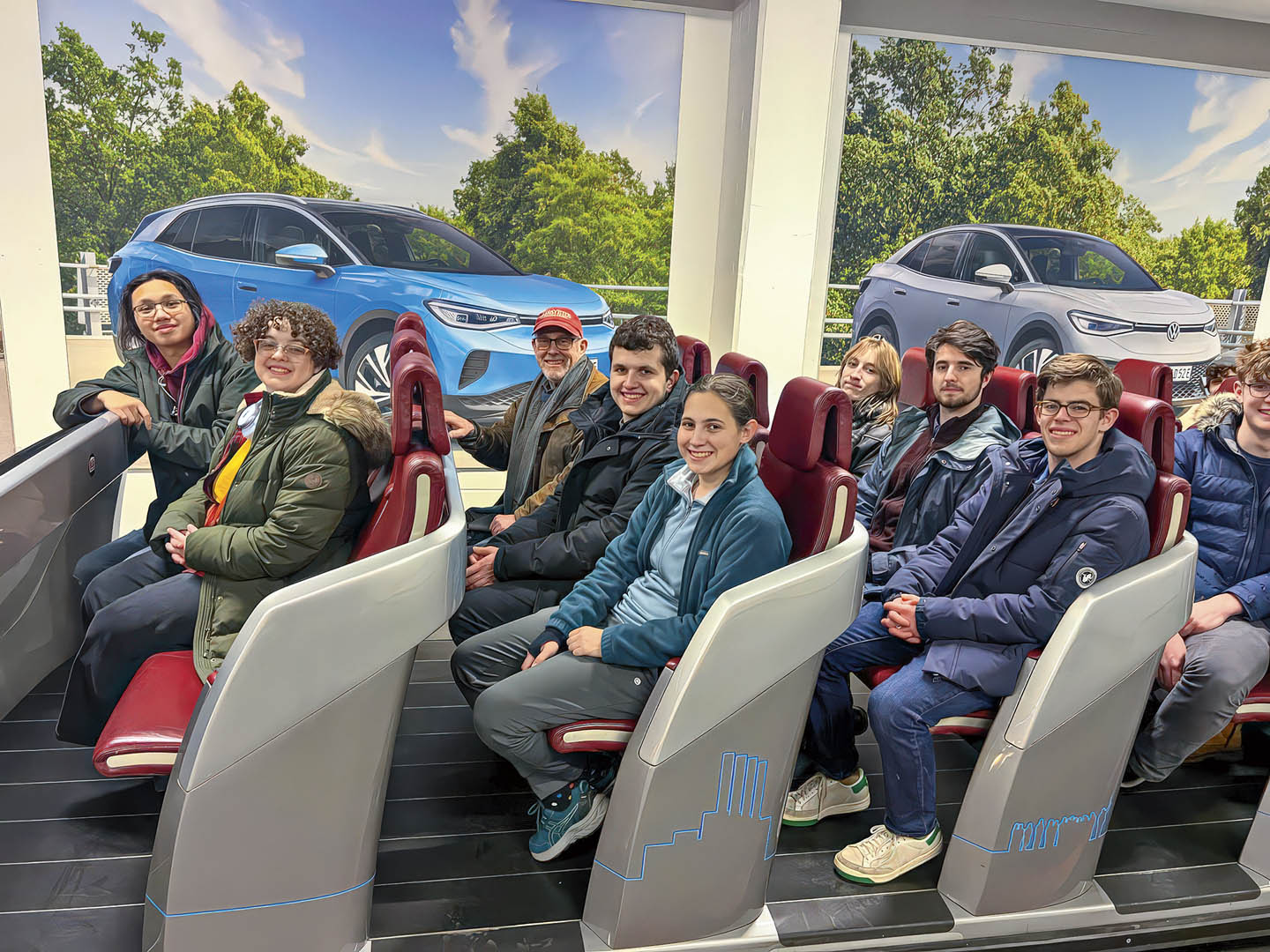
“It’s a multi-floor, highly automated car manufacturing pipeline,” Ian Horch ’27 says about the Volkswagen factory in Wolfsburg. “As a robotics major, I was drooling over the speed and control the robots demonstrated.”
Photographs Courtesy of sites.lafayette.edu/engineers-in-bonn
Center of immersion
Prof. Art Kney takes one more memorable trip with student engineers.
By Katlyn Clarke
Every spring, second-year engineers at Lafayette have an opportunity to attend a faculty-led study abroad program, “Cities: An Introduction to the Civil Engineering Systems that Make Cities Work,” typically in either Madrid, Spain, or Bonn, Germany.
Before he retired in May, Arthur Kney, professor of civil and environmental engineering, led 25 students to Bonn for the semester. “Although the classes are rigorous, the trips provide freedom to explore independently,” says Kney (pictured above, middle row), who has hosted numerous travel experiences over the years. Documenting their time, students blogged at sites.lafayette.edu/engineers-in-bonn, which serves as an archive for all they learned.
Here is a sampling of what they had to say.

